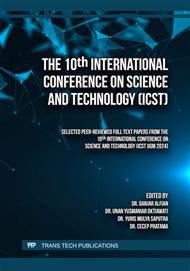[1]
Information on https://www.billboard.com/charts/hot-100
Google Scholar
[2]
C. Cibils, Z. Meza, and G. Ramel: Predicting a Song's Path through the Billboard Hot 100 (2015).
Google Scholar
[3]
Information on https://alightmedia.com/news/why-billboard-advertising is-effective
Google Scholar
[4]
Dataset on https://github.com/mhollingshead/billboard-hot-100
Google Scholar
[5]
F. Pachet and C. Sony: Hit song science (Music data mining, 305-326, 2011).
Google Scholar
[6]
D. Martin-Gutierrez, G. Hernandez Penaloza, A. Belmonte-Hernandez, and F. Alvarez Garcia: A Multimodal End-to-End Deep Learning Architecture for Music Popularity Prediction (IEEE Access 8, 39361–39374, 2020).
DOI: 10.1109/access.2020.2976033
Google Scholar
[7]
M. Zhao, M. Harvey, D. Cameron, F. Hopfgartner, and V. J. Gillet: An analysis of classification approaches for hit song prediction using engineered metadata features with lyrics and audio features (Lecture Notes in Computer Science, 303–311, 2023).
DOI: 10.1007/978-3-031-28035-1_21
Google Scholar
[8]
M. Interiano et al.: Musical trends and predictability of success in contemporary songs in and out of the top charts (Royal Society Open Science 5(5), 171274, 2018).
DOI: 10.1098/rsos.171274
Google Scholar
[9]
C. V. Soares Araujo, M. A. Pinheiro de Cristo, and R. Giusti: Predicting music popularity using music charts (2019 18th IEEE International Conference On Machine Learning And Applications (ICMLA), 2019).
DOI: 10.1109/icmla.2019.00149
Google Scholar
[10]
D. Herremans, D. Martens, and K. Sörensen: Dance hit song prediction (Journal of New Music Research 43(3), 291–302, 2014).
DOI: 10.1080/09298215.2014.881888
Google Scholar
[11]
E. Zangerle, M. Vötter, R. Huber and Y.-H. Yang: Hit song prediction: leveraging low- and high-level audio features (Proceedings of the International Society for Music Information Retrieval Conference (ISMIR), 319-326, 2019).
Google Scholar
[12]
R. R, A. Anand, Y. Soni, and H. Mahajan: Predicting Hit Music using MIDI features and Machine Learning (2018 3rd International Conference on Communication and Electronics Systems (ICCES), 2018).
DOI: 10.1109/cesys.2018.8724001
Google Scholar
[13]
B.-D. Pham, M.-T. Tran, and H.-L. Pham: Hit Song Prediction based on Gradient Boosting Decision Tree (2020 7th NAFOSTED Conference on Information and Computer Science (NICS), 2020).
DOI: 10.1109/nics51282.2020.9335886
Google Scholar
[14]
Y. Ge, J. Wu, and Y. Sun: Popularity Prediction of Music Based on Factor Extraction and Model Blending (2020 2nd International Conference on Economic Management and Model Engineering (ICEMME), 2020).
DOI: 10.1109/icemme51517.2020.00214
Google Scholar
[15]
L. R. Febirautami, I. Surjandari, and E. Laoh: Determining Characteristics of Popular Local Songs in Indonesia's Music Market (2018 5th International Conference on Information Science and Control Engineering (ICISCE), 2018).
DOI: 10.1109/icisce.2018.00050
Google Scholar
[16]
F. Khan, I. Tarimer, H. S. Alwageed, B. C. Karadag, M. Fayaz, A. B. Abdusalomov, and Y.-I. Cho: Effect of Feature Selection on the Accuracy of Music Popularity Classification Using Machine Learning Algorithms (Electronics 11(21), 3518, 2022).
DOI: 10.3390/electronics11213518
Google Scholar
[17]
Kang, M. Manduluk, and B. K. Szymanski: Analyzing and predicting success in music (Sci Rep 12(1), 21838, 2022).
Google Scholar
[18]
I. Battas, R. Oulhiq, H. Behja, and L. Deshaye: A Proposed Data Preprocessing Method for an Industrial Prediction Process (2020 6th IEEE Congress on Information Science and Technology (CiSt), 2020).
DOI: 10.1109/cist49399.2021.9357269
Google Scholar
[19]
Information on https://www.experian.co.uk/business/glossary/data-segmentation/
Google Scholar
[20]
R. J. Urbanowicz, M. Meeker, W. La Cava, R. S. Olson, and J. H. Moore: Relief-based feature selection: Introduction and review (Journal of Biomedical Informatics 85, 189–203, 2018).
DOI: 10.1016/j.jbi.2018.07.014
Google Scholar
[21]
N. V. Chawla, K. W. Bowyer, L. O. Hall, and W. P. Kegelmeyer: SMOTE: Synthetic Minority Over-sampling Technique (Journal of Artificial Intelligence Research 16, 321–357, 2002).
DOI: 10.1613/jair.953
Google Scholar
[22]
Information on https://scholarworks.utep.edu/cgi/viewcontent.cgi?article=2202&context=cs_techrep
Google Scholar
[23]
Z. Reitermanova: Data Splitting (Proc. WDS's Contributed Papers Matfyzpress 10, 31-36, 2010).
Google Scholar
[24]
Information on https://www.javatpoint.com/machine-learning-random-forest-algorithm
Google Scholar
[25]
Information on https://www.tibco.com/reference-center/what-is-logistic-regression
Google Scholar
[26]
Information on https://datascientest.com/en/deep-neural-network-what-is-it-and-how-is-it-working
Google Scholar
[27]
Information on https://www.javatpoint.com/xgboost-ml-model-in-python
Google Scholar
[28]
Information on https://medium.com/@kennymiyasato/confused-about-the-confusion-matrix-b98a1afb00af
Google Scholar


